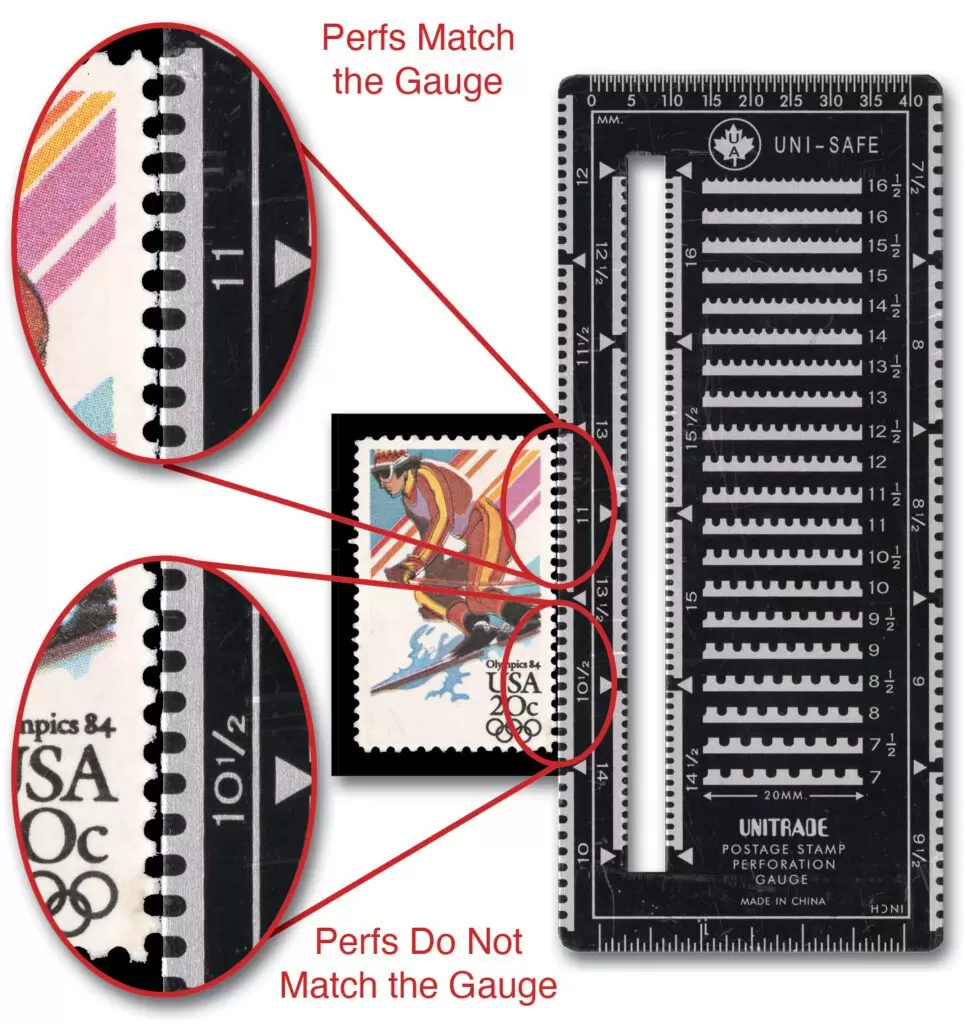Perforations, which are small rows of holes punched between stamps, are essential for easy separation. The number of holes or teeth within two centimeters is measured using a perforation gauge. For instance, if a stamp has 11 perforations in 2 cm, it’s referred to as “Perf 11.” Here are some steps on how to measure perforations accurately:
- Positioning the Stamp: Place the stamp in the center of your perforation gauge.
- Aligning Perforations: Slide the stamp up or down until the perforations on the stamp perfectly align with the pattern on the gauge all along the length of the stamp. If the perforations only match up partially with the gauge, continue adjusting until they align completely.
- Measuring Horizontally and Vertically: It’s important to measure both one horizontal side and one vertical side of the stamp, especially for stamps with compound perforations. Compound perforations have different perforation gauges on the horizontal and vertical sides. When listed in catalogs, the horizontal perforation gauge is mentioned first, followed by the vertical gauge. Make sure to measure both sides accurately for a complete assessment of the stamp’s perforations.

